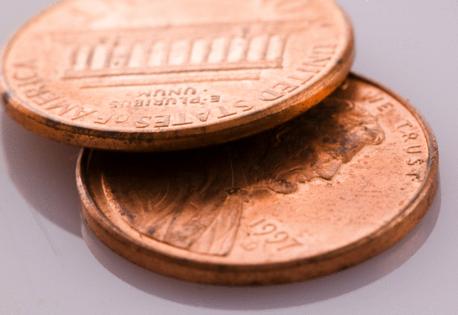The last penny: US Treasurer ends copper-clad cents in Philly Mint visit after 232-year run
Published in News & Features
PHILADELPHIA — The U.S. government started making pennies in Philadelphia in 1792 when the city was the nation’s capital.
It stopped Wednesday, as U.S. Treasurer Brandon Beach stepped up to a machine in the penny room of the world’s largest coin factory and ceremonially pushed a button to strike the last handful of copper-clad, mostly zinc, one-cent coins.
In fact, however, the last pennies struck for public circulation left the Mint in July, staffers said. The Mint still produces nickels, which also cost more to produce than they are worth, as well as larger change.
Beach credited “President Donald Trump’s commonsense agenda” and its plan “to align our currency with the way modern Americans use our wallets” for killing the penny. He called it a historic moment, noting the last small-change coin the government canceled was the half-cent, in 1857.
The penny’s value has been eroded by inflation and higher metals costs. Its use has been displaced by digital payment systems, now available for parking meters, SEPTA, bridge and turnpike tolls, and washing and gambling machines.
Last summer, the Mint imposed a hiring freeze. Employment shrunk from 400 to around 300, thanks partly to a wave of early retirements encouraged by the Trump administration’s cost-cutting. Workers still staff three shifts around the clock.
Treasury Secretary Scott Bessent ordered the Philadelphia Mint and the slightly smaller one in Denver to stop making pennies after Trump called for an end to the money-losing coins last winter.
Bessent canceled the penny “upon determining it is no longer necessary to meet the needs of the United States,” Beach told the staff and guests in what used to be the penny room of the two-block-long Philadelphia Mint on Independence Mall, the world’s largest coin factory.
Each penny cost $3.69 cents to make, Beach said. Americans have hoarded 300 billion pennies, which are still legal tender, he added. He estimated savings from stopping penny production at $56 million a year. The Mint says the typical penny lasts 30 years.
The Mint struck 5.6 billion coins in fiscal 2024, including 3.2 billion pennies. The Mint also produces commemorative coins, but that accounts for less than half its total output.
According its annual financial reports, the Mint has covered losses from its small change with profits from sales of gold and silver bullion from smaller facilities in San Francisco and at West Point, N.Y., and from commemorative coins, including those made in Philadelphia.
Demand for new U.S. coinage fell from a peak of 15 billion coins in fiscal 2021 to less than 6 billion last year. Americans are moving away from paper money more slowly. Currency use rose less than 1% last year, the smallest rise in at least 20 years, according to Federal Reserve data.
In an October 2022 report, “U.S. Coin Circulation: The Path Forward,” the Fed and the Mint noted the “erosion” of coin use for basic transportation. Coins were replaced by E-ZPass at tollbooths and by credit, debit and other payment cards at parking meters and public transit systems including SEPTA as “the largest contributor” to the drop in coin use. The report also cited the replacement of cash by payment cards at other former cash users, such as casinos and laundromats.
Mint data show that combined Philadelphia and Denver production of pennies, nickels, dimes, quarters, half-dollars, and dollars for general circulation peaked at 17 billion in 2015, with pennies accounting for more than half the total. That number fell every subsequent year to 11.4 billion in 2023 and then tumbled to just 5.6 billion in fiscal 2024.
The Mints made more quarters than dimes for the first time in 2024. Production of the John F. Kennedy half-dollar rose from 2015 to 2023 in absolute terms as other coins fell — until last year, when production of the relatively popular 50-cent coin fell, too.
Mint employees said they were not aware of plans to stop making nickels or to close the Mint, whose mostly windowless two blocks perches on property zoned for commercial, residential or public use.
_____
©2025 The Philadelphia Inquirer. Visit inquirer.com. Distributed by Tribune Content Agency, LLC.







Comments